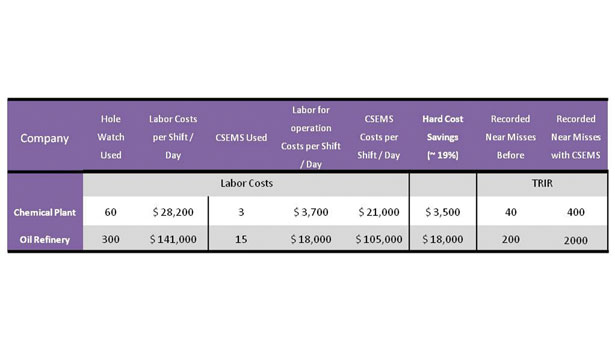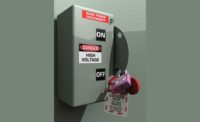Total penalty amount proposed by OSHA for violations of the lockout-tagout standard 1910.0147 (October 2012 through September 2013).
3,367 Number of total citations
2,008 Number of total inspections
Most penalized industries
Fabricated Metal Product Manufacturing - $1,372,395
Food Manufacturing - $907,696
Nonmetallic Mineral Product Manufacturing - $525,488
Primary Metal Manufacturing - $524,274
Wood Product Manufacturing - $511,361
Plastics and Rubber Products Manufacturing - $449,258
Transportation Equipment Manufacturing - $369,067
Machinery Manufacturing - $308,000
Merchant Wholesalers, Durable Goods - $200,372
Printing and Related Support Activities - $184,168
ENFORCEMENT CASES
OSHA cites USUI International Corp. in Monroe, Ohio, for repeatedly failing to train workers in lockout/tagout procedures
OSHA cited USUI International Corp. in Monroe for 13 alleged safety and health violations, including two repeat violations for failing to enforce and train workers in lockout/tagout procedures to prevent equipment from starting up during maintenance. Proposed fines total $90,600.
OSHA cites Jacksonville, Fla.-based Bacardi Bottling following death of temporary worker on 1st day
OSHA cited Bacardi Bottling Corp. with 12 alleged safety violations following the death of a 21-year-old temporary worker his first day on the job. The victim was cleaning glass from under the hoist of a palletizing machine when an employee restarted the palletizer. Bacardi Bottling had failed to train temporary employees on utilizing locks and tags to prevent the accidental start-up of machines and to ensure its own employees utilized procedures to lock or tag out machines. Proposed penalties for the willful and serious violations total $192,000.
3 million workers who service equipment routinely face the greatest risk of injury from hazardous energy. Workers injured on the job from exposure to hazardous energy lose an average of 24 workdays for recuperation.
What are the dangers of hazardous energy?
Workers servicing or maintaining machines or equipment may be seriously injured or killed if hazardous energy is not properly controlled. Injuries resulting from the failure to control hazardous energy during maintenance activities can be serious or fatal. Injuries may include electrocution, burns, crushing, cutting, lacerating, amputating, or fracturing body parts, and others.
Typical minimal lockout procedures (from Appendix A, 1910.0147)
Sequence of Lockout
(1) Notify all affected employees that servicing or maintenance is required on a machine or equipment and that the machine or equipment must be shut down and locked out to perform the servicing or maintenance.
Name(s)/Job Title(s) of affected employees and how to notify.
(2) The authorized employee shall refer to the company procedure to identify the type and magnitude of the energy that the machine or equipment utilizes, shall understand the hazards of the energy, and shall know the methods to control the energy.
Type(s) and magnitude(s) of energy, its hazards and the methods to control the energy.
(3) If the machine or equipment is operating, shut it down by the normal stopping procedure (depress the stop button, open switch, close valve, etc.).
Type(s) and location(s) of machine or equipment operating controls.
(4) De-activate the energy isolating device(s) so that the machine or equipment is isolated from the energy source(s).
Type(s) and location(s) of energy isolating devices.
(5) Lock out the energy isolating device(s) with assigned individual lock(s).
(6) Stored or residual energy (such as that in capacitors, springs, elevated machine members, rotating flywheels, hydraulic systems, and air, gas, steam, or water pressure, etc.) must be dissipated or restrained by methods such as grounding, repositioning, blocking, bleeding down, etc.
Type(s) of stored energy - methods to dissipate or restrain.
(7) Ensure that the equipment is disconnected from the energy source(s) by first checking that no personnel are exposed, then verify the isolation of the equipment by operating the push button or other normal operating control(s) or by testing to make certain the equipment will not operate.
Caution: Return operating control(s) to neutral or “off” position after verifying the isolation of the equipment.
Method of verifying the isolation of the equipment.
(8) The machine or equipment is now locked out.
Restoring Equipment to Service.
When the servicing or maintenance is completed and the machine or equipment is ready to return to normal operating condition, the following steps shall be taken.
(1) Check the machine or equipment and the immediate area around the machine to ensure that nonessential items have been removed and that the machine or equipment components are operationally intact.
(2) Check the work area to ensure that all employees have been safely positioned or removed from the area.
(3) Verify that the controls are in neutral.
(4) Remove the lockout devices and reenergize the machine or equipment.
Note: The removal of some forms of blocking may require reenergization of the machine before safe removal.
(5) Notify affected employees that the servicing or maintenance is completed and the machine or equipment is ready for use.






